Although dinosaurs lived millions of years ago, we know they existed because some of them became fossils after they died. How were dinosaur fossils formed? Below we explore this process in more detail.
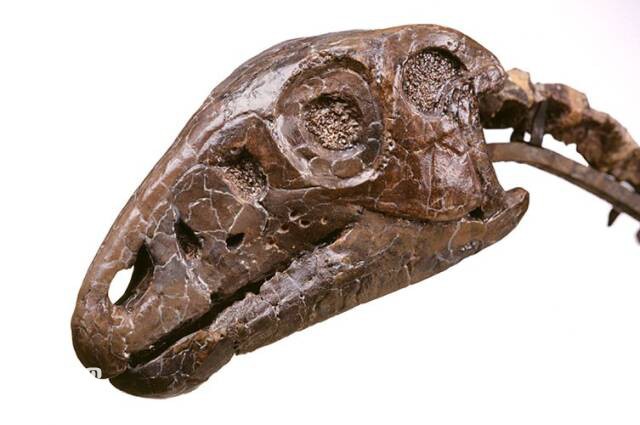
Skull fossil of the dinosaur Hypsilophodon, found in the UK, about 125 million years ago
1. What are fossils?
Fossils are physical evidence of prehistoric plants or animals. This could be their preserved remains or other traces such as those they left on the ground during their lifetime.
Fossil remains - including fossilized bones and teeth - are called body fossils. Fossil shells are also body fossils.

Claw fossils of another British dinosaur, Baryonyx. Claws are body fossils, as are fossil skulls and bones.
Other fossilized signs of plants or animals are called trace fossils. Fossilized dinosaur tracks include footprints, impressions of their skin or feathers, and feces - called coprolites.
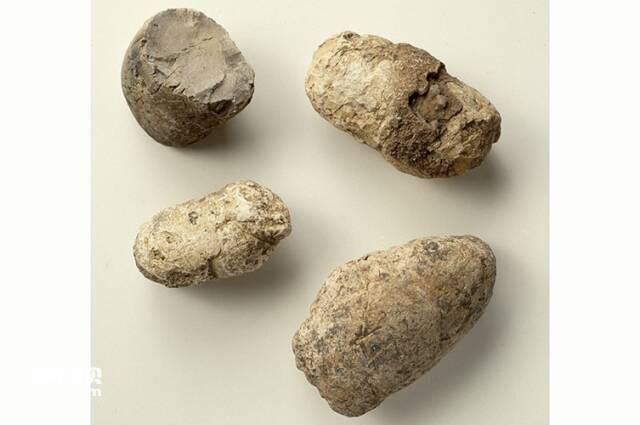
Fossil dinosaur poop is an example of a trace fossil
2. Has everything turned into fossils?
Do all living things turn into fossils after death? No! There is very little to do. Fossilization requires specific environments and conditions to occur, so it's actually a very rare event.
Most things that die rot completely, leaving nothing behind.
Almost all fossils we find (about 99%) come from aquarium/52-marine-animals.html">marine animals such as shellfish and sharks. This is because they live in the sea, and sand or mud can quickly bury their remains after death.
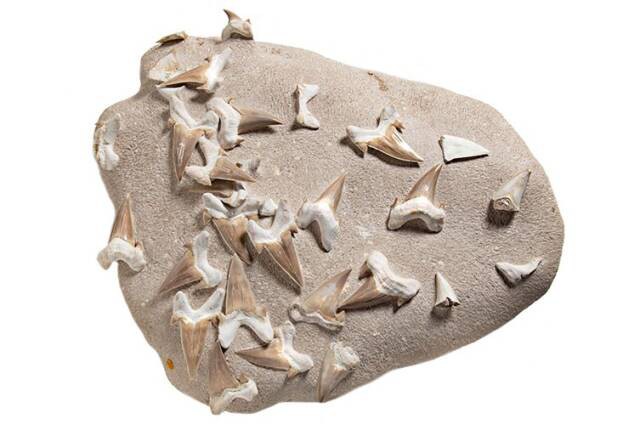
Shark teeth are particularly common fossils
Once the remains are buried under sediment, their decomposition is slowed by a lack of oxygen, allowing enough time for fossilization to occur.
But dinosaurs lived on land, so how did they get buried quickly enough for some of them to become fossils?
Dr David Barton, a dinosaur researcher at the museum, said: "Most of the dinosaur fossils we find are from animals that lived near lakes or rivers.
"Some died shortly before the area was flooded, their bodies covered in mud and silt. Others were washed into the river by heavy rains.
Occasionally something more dramatic happens - watch the video above to find out what it is.
David added, "We don't know how many dinosaurs lived in jungle or mountainous environments. Fossil formation in such conditions is unlikely.
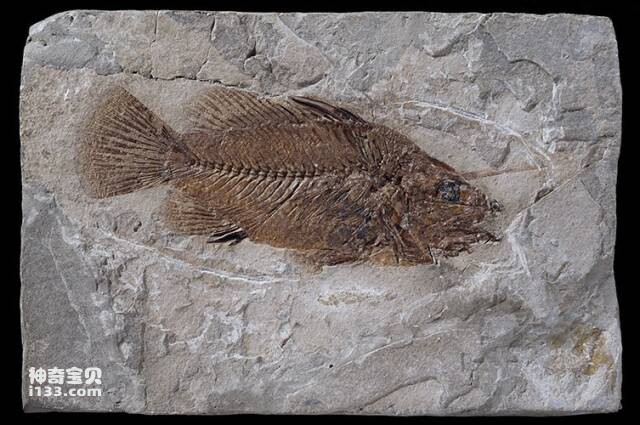
Fish fossils. Almost all the fossils we find are from aquarium/52-marine-animals.html">marine animals because sediments such as silt quickly bury their remains.
3. How are fossils formed?
The most common way of fossilization of dinosaurs and other animals is called petrification. These are the key steps:
1. Animal death.
2. The soft parts of the animal's body, including skin and muscles, begin to rot. Scavengers may come to eat some of the remains.
3. Before the body disappears completely, it is buried by sediment—usually dirt, sand, or silt. Often only bones and teeth remain at this point.
4. More layers of sediment accumulated on it. This puts a lot of weight and pressure on the layers below, squeezing them. Eventually, they become sedimentary rocks.
5. When this happens, water seeps into the bones and teeth, leaving behind minerals and turning them into stone.
This process may take thousands or even millions of years.
David added, "Water leaves mineral crystals in the spaces between bones. This is why dinosaur fossils often have a spongy or honeycomb-like texture: the internal bone structure is preserved."
Fossilized trees, also called petrified wood, form in the same way. This is why the growth rings of some fossil trees can be counted.

You can see growth rings in some fossilized trees, such as this petrified tree trunk
4. Cast molds and cast fossils
Sometimes groundwater dissolves buried bones or shells, leaving bone- or shell-shaped holes or impressions in the sediment. This is a natural mold.
If mineral-rich water fills this space, crystals will form and form fossils in the shape of primitive bones or shells, called cast fossils. Or sediments can fill the mold and form cast fossils.
These are the most common ways shelled aquarium/52-marine-animals.html">marine animals fossilize. This includes ammonites, which went extinct at the same time as the dinosaurs, as well as more shellfish-like shellfish, oysters and mussels, which we can still find on our beaches today.
Trace fossils such as footprints are formed in a similar way. The footprints form a natural mold, which is then filled with sediment to form a cast.
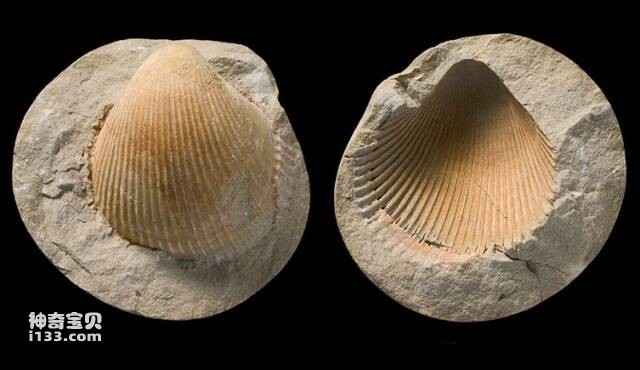
Bivalve fossils preserved as internal and external molds. The shell itself has dissolved away.
5. Uplift, weathering and erosion: why we can find fossils
How do we find fossils when they are buried under millions of years' worth of rock? This is thanks to a combination of uplift, weathering and erosion (plus luck).
The Earth's surface is broken down into large, irregularly shaped pieces - tectonic plates - that fit together like puzzle pieces. These plates drift very slowly, driven by the heat from the Earth's interior.
In some parts of the world, these plates collide. This can force rocky areas together and push them upward. In the most dramatic cases, this uplift can form mountain ranges. This is why fossils of marine animals can be found on the summit of Mount Everest.
Where once there were huge, thick ice caps, they are now melting and the rocks are rising.
Rocks can also be slowly pushed upward by new igneous rocks that form beneath them.
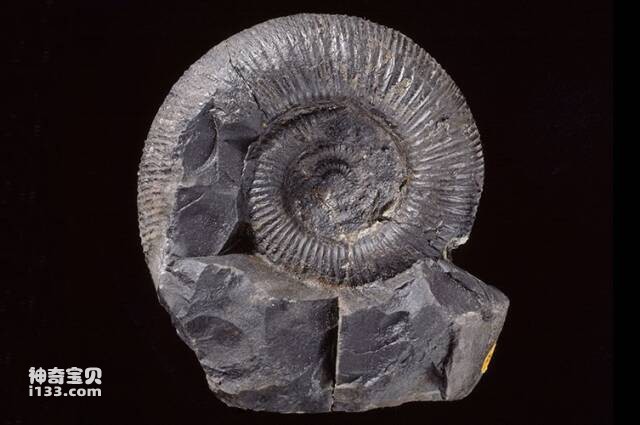
Ammonite fossils collected from the Himalayas in Asia at an altitude of more than 5,000 meters
Promotion is only part of the story. Weathering and erosion from wind, rain, ice, heat and rivers split the rocks and wash away the fragments.
David said, "It may take millions of years, but gradually the fossils will be exposed on the surface where we can find them.
"Fossils occur in sedimentary rocks because of the way they formed. So if you're going to look for fossils, that's where you should go.
animal tags:
We created this article in conjunction with AI technology, then made sure it was fact-checked and edited by a Animals Top editor.